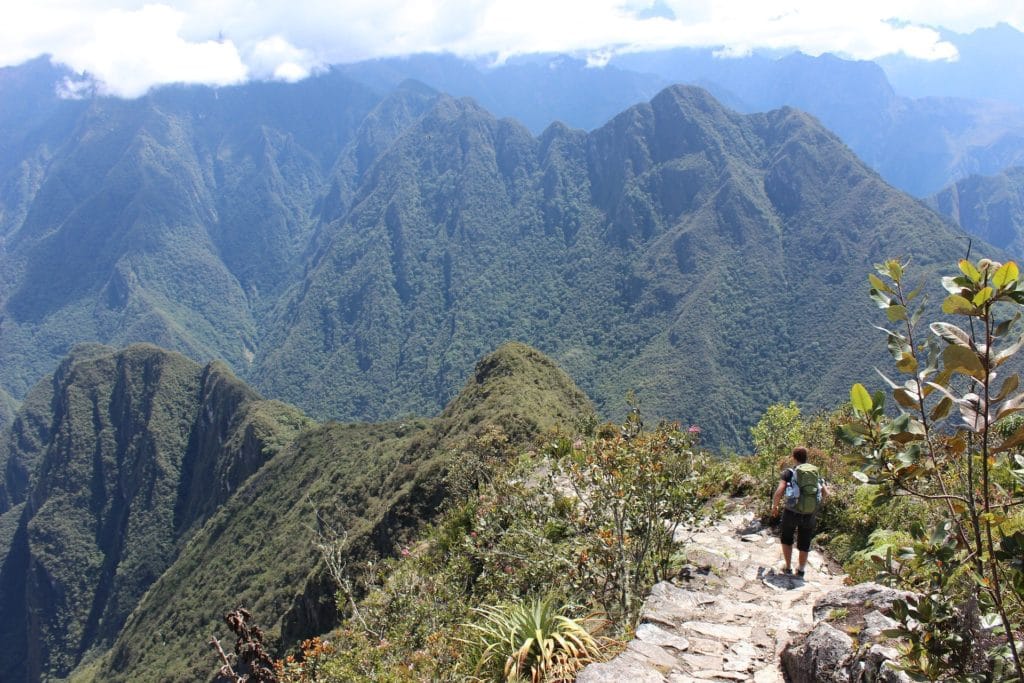Oxfordshire Mind’s Physical Activity Team are offering a weekly ‘virtual walk’ this week the team are visiting the ruins of the Inca city of Machu Picchu.
Welcome, everyone. Today we’re visiting one of the most breathtakingly beautiful tourist destinations in the world; the ruins of the Inca city of Machu Picchu.
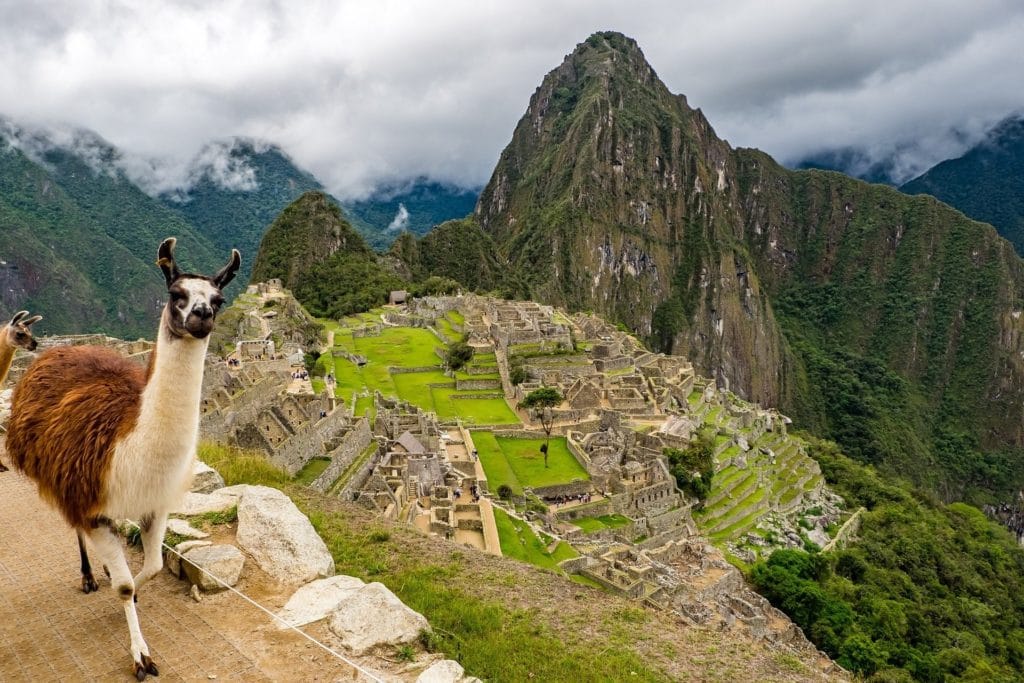
The Inca empire is a fascinating part of world history. Despite not using an alphabetic writing system or wheeled vehicles, it brought together a vast area stretching along much of the Andes and comprising parts of modern Argentina, Chile, Ecaudor, Bolivia and Colombia. Machu Picchu is a testament to this ingenuity and ambition. The purpose of the site is still debated, but most people think it was some sort of royal estate for the Sapa Inca or emperor.
Built nearly 600 years ago, this city in the clouds nestles on a small plateau between two lofty peaks, almost as if it were hanging suspended in between them. High up in the Andes, it’s so remote and inaccessible that the Spanish colonisers never found it and destroyed it like they did with many other Inca sites.
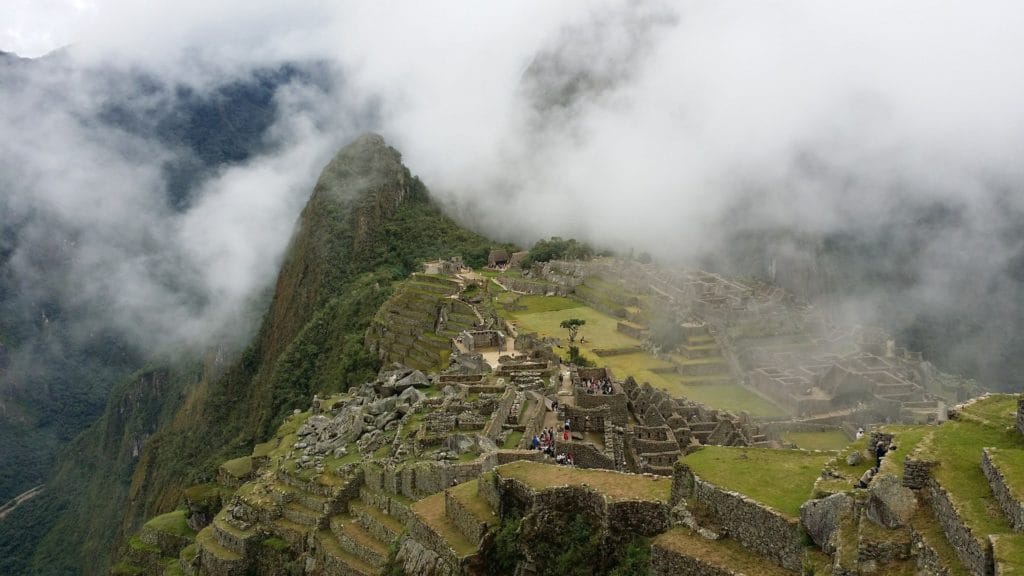
This early in the morning, the ruins are shrouded in a fine damp mist, giving an extra air of mystery to the site. It’s quiet, apart from the roar of the Urubamba river in the valley below, which circles the plateau in a big loop on three sides. It’s a lush, green spot. On the margins of the city, you can see how the jungle that once covered the entirety of the site wants to creep back in. Colourful flowers and plants with huge, vibrantly green leaves crowd together like troops lined up for a battle, waiting for the signal to charge.
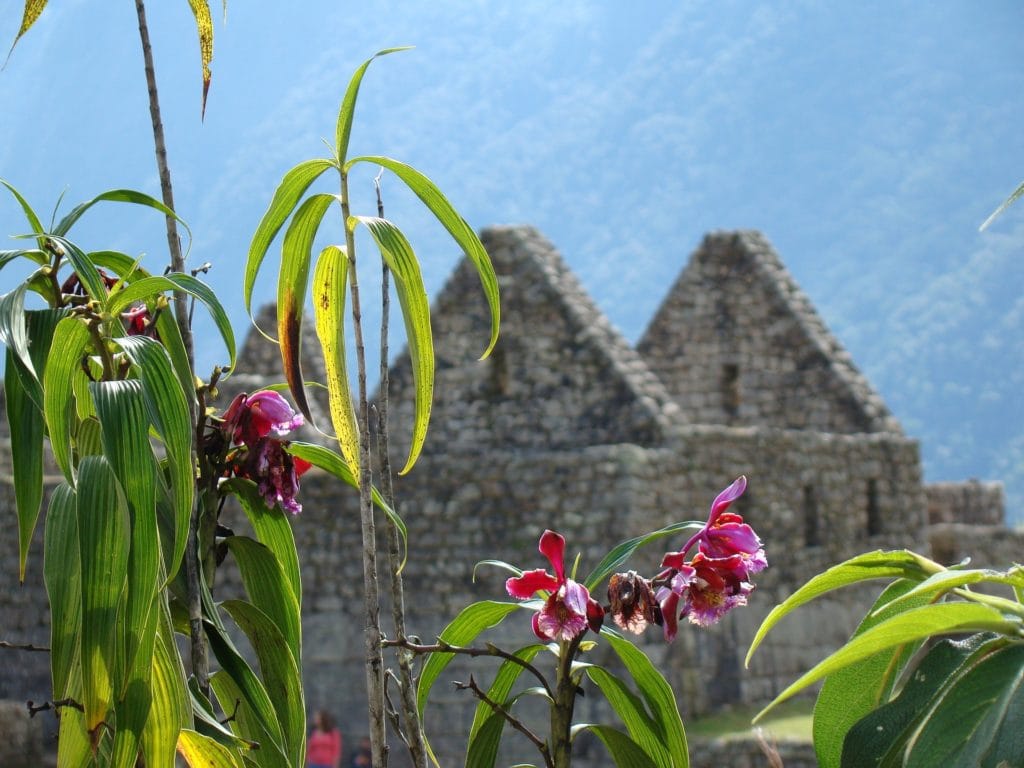
We begin to wonder around the complex, up stone steps and along streets, past rows of neat, carefully constructed stone buildings. See how perfectly each block fits together? The Inca built their structures by carefully shaping each stone so they exactly matched up with all the stones around them, removing the need for mortar. This made them more resistant to the earthquakes that often rock these lands.
Other tourists are not the only thing you might encounter as you wander around these ruins. We turn a corner and come across a llama, which leaves off cropping the grass and lifts its head to give us a curious stare. Dozens of them wander freely throughout Machu Picchu. They’re probably the only living creatures that make a permanent home here, these days. It’s a beautiful animal, with its long, slender neck and its big, dark eyes. Its fleece is so soft and fluffy it’s hard to resist the temptation to go over and bury your head in it. It doesn’t seem to be scared of us at all- probably it’s seen enough visitors come and go to know that we pose it no threat. After a moment it simply returns to its meal, confident that we will be on our way soon enough.
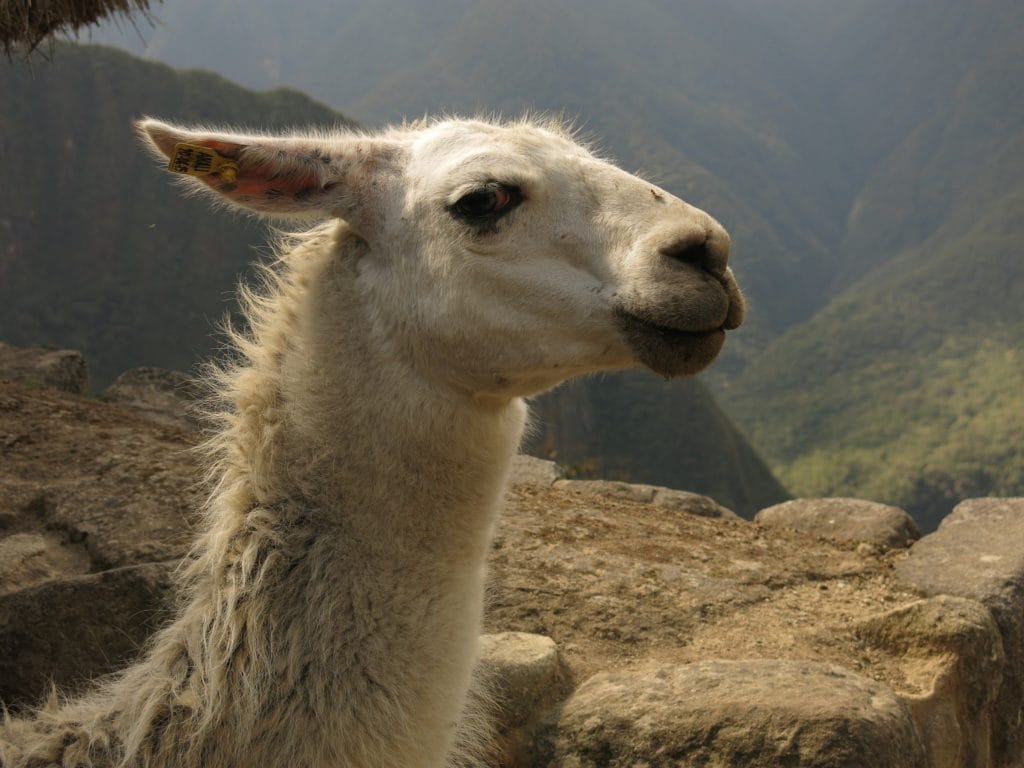
We climb some steps and come out on a small platform, open on three sides, giving a panoramic view of the mountains surrounding it. In the centre is a strange-looking stone, with an irregular-shaped base, cut into tiers, and a smaller rectangle sticking up out of it at the top. This is the Intihuatana stone. Inti was the name of the main Inca deity, the sun god, and the name loosely translates as ‘place to tie up the sun’. According to some people, the Inca believed that this stone tethered the sun in the sky, keeping it to its yearly course, although really Intihuatana’s true purpose is a mystery. It certainly aligns with the sun’s position on the winter solstice and can be used as a sort of sundial. Given the importance of the sun in Inca religion, this makes it likely that the stone had some sort of religious meaning to it. There’s something uniquely awe-inspiring about this spot, with its backdrop of lofty mountains stretching up into the sky.
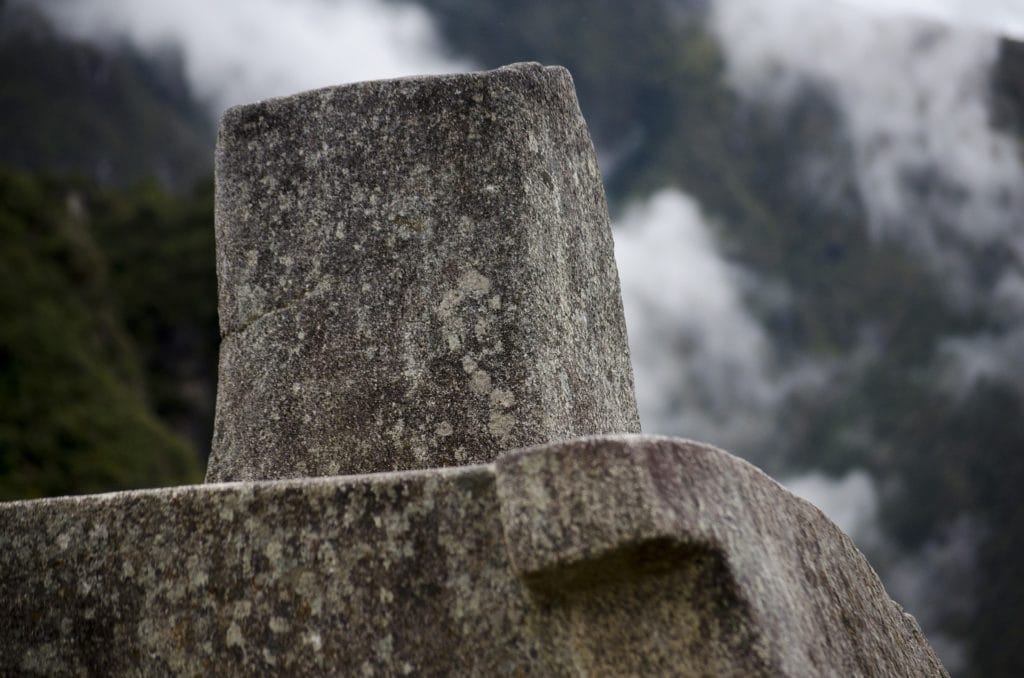
At the other end of the complex there is a steep, pointed peak- the one you often see in the backdrop of pictures of Machu Picchu. We walk over and peer up at it. This is called huayna picchu, and it’s possible to hike right to the top to get a view out over the ruins. It’s a little bit of a workout, but it’s well worth it for the view. Shall we try it? We begin to work our way up, along a twisting, winding path, up into the clouds. There’s no guard rail in places, so we have to keep our eyes firmly on the path ahead of us to avoid gazing down into the dizzying drop to the valley below.
As we reach the peak, the clouds clear, and we have a stunning view out over the entirety of the ruins. We’re on top of the world, here. It’s exhilarating, feeling the cool air on our cheeks and a slight breeze ruffling our hair. I’ll leave you here for a moment of quiet contemplation. Let’s end our walk there for this week- and see you next week for another walk.
